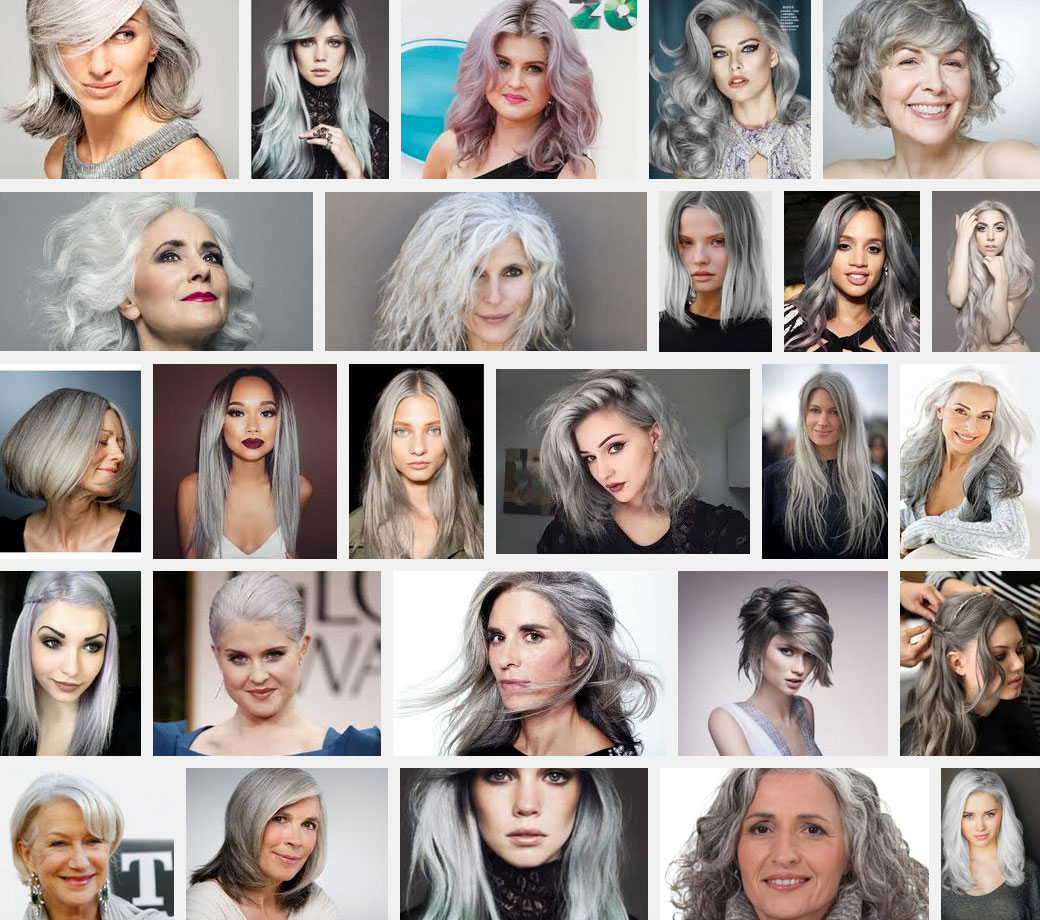Going grey is inevitable and it leaves you with two options. One, dye your hair to cover the grey, or two, embrace the natural change. In my experience, most women progress from option one to option two over time, colouring their hair until they’ve had enough of the expense and effort it involves. Whatever you choose, there is no right or wrong. It’s a personal decision.
Today, more than ever before, individuality is celebrated. Our current fashion era encourages all sorts of outfit juxtapositions, colour combinations and unconventionally flattering proportions. The stereotypical lines between feminine and masculine fashion are blurring. In general, fashion is more accepting of differences and individuality, and this has definitely had a positive impact on the acceptance of greying hair. Challenging the hair colour’s traditionally negative association with age, grey has even become an edgy choice for the young and fashion forward, much like rainbow hair.
Then there is the strong and growing emphasis on practical fashion. The Sporty Luxe trend, ultra comfortable fashionable footwear, roomy fits, and the ongoing movement towards more causal attire are all examples of this trend. Showing your natural grey is practical, and fits right into today’s fashion era.
If you doubt that grey can be fashionable and stylish, just do an image search for “gray hair” on Google. You will see something like this:
Once the negative associations are lost, grey is just another colour. Greying hair creates a salt and pepper effect with dark brown or black hair. It looks fashionable and attractive when it’s cut into a good shape, is well maintained, and looks healthy. Uniformly grey hair in all shades from dark grey to white can look stylish in a wide range of cuts, from ultra short pixies to long flowing locks.
And like any other aspect of your colouring, it impacts your style choices. Several of my clients have stopped dyeing their hair at some point in the period that we have worked together, going from being a brunette to looking salt and peppered, or to sporting completely grey hair. Their changing hair colour has usually meant adjusting the colour palettes in their wardrobe and in their make-up routine.
Deciding to go grey is a big step that requires confidence and patience. Like when growing your hair out from a pixie to a bob, there is an in-between stage where you’ll probably feel unkempt, frumpy and awkward as the one colour integrates with the other. It takes a while to reach the stage where your hair looks deliberately streaked with salted grey, or goes completely white. Sometimes it’s worth dyeing your hair if the grey is sparse. Sometimes it’s worth cutting your hair shorter to achieve an even crop of grey hair faster, rather than waiting for the two-toned effect to grow out with longer hair. And sometimes it’s worth dyeing your hair a completely new colour so that the transition to grey is more gradual.
One practical note: Grey hair usually has a drier and courser texture than your natural colour, so it’s important to maintain your hair even more vigilantly when you’re leaving things au naturel.
You shouldn’t feel pressured to colour your greying hair if you don’t want to. Just like you shouldn’t feel pressured to stop dyeing your hair if you prefer sporting a colour other than your own. Personal style is exactly that: Personal. And thanks to modern fashion, grey and colour are now both equally viable options.










